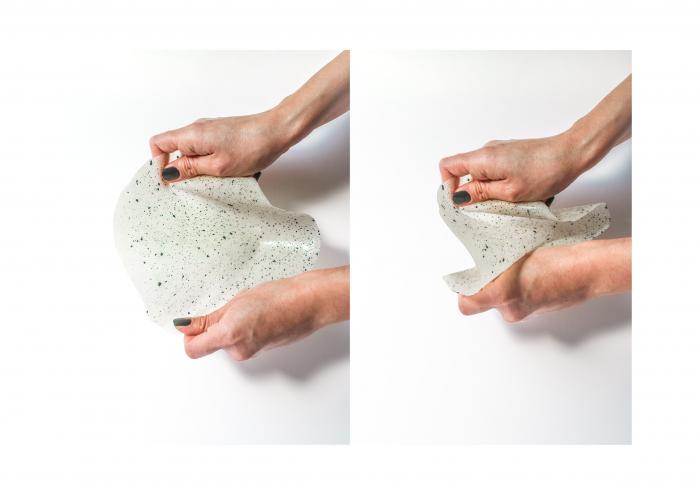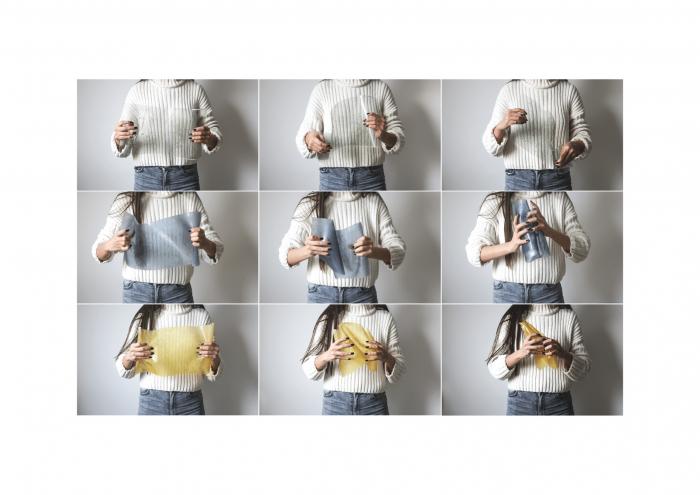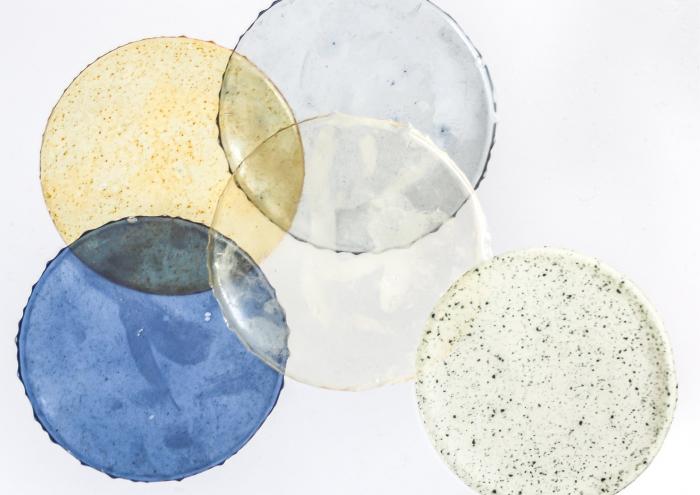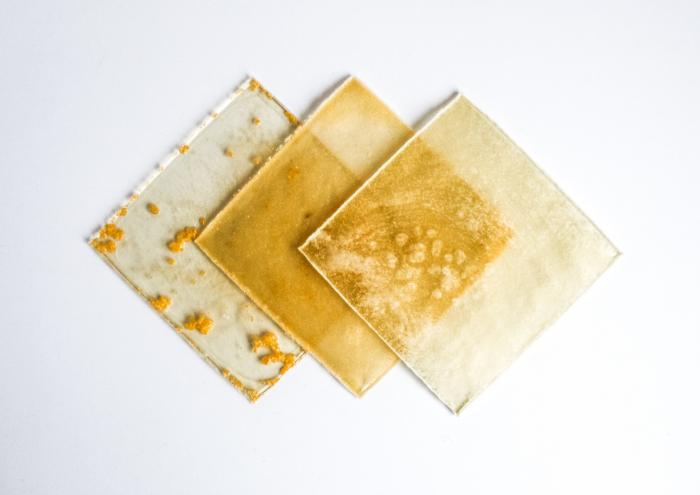I. SUMMARY INFORMATION
Project
267669
Status
Submitted
Award category
Techniques, materials and processes for construction and design
You want to submit
NEW EUROPEAN BAUHAUS RISING STARS : concepts or ideas submitted by young talents (aged 30 or less)
Project title
Bioplastic pavilion
Full concept/idea title
A conscious approach to material design and responsible consumption
Description
The creation of plastic was revolutionary, unfortunately due to its misuse it has become a problem for the environment. Building construction is the second industry to produce large quantities of plastic in the world. The need to create an alternative has become imminent. This proposal is focused on bioplastic, a novel material that could be applied to temporary architecture due to its ephemeral nature to tackle the problem of waste.
Where is your concept/idea being developed or intended to be implemented in the EU?
Italy
Lombardia
Piazza Leonardo da Vinci, 32
MILANO (MI)
20133
II. DESCRIPTION OF THE PROJECT
Please provide a summary of your concept/ idea
Our aim is to make youth conscious about the origins and life cycle of materials.
Plastic, as a primary material of our age, has been critical to our modern life. Unfortunately, its misuse and overconsumption from industries have led to an alarming increase of environmental pollution.
We must rethink our current mindset and systems by implementing innovative materials that do not produce harmful waste and respond to circular economy.
Bioplastic is a sustainable alternative which has the potential to be implemented in a variety of industries, including the built environment.
Through various compositions, properties such as strength, elasticity and viscosity can be adjusted according to the needs, while its high malleability allows it to be molded into different shapes.
Our research focuses on a bioplastic that is bio-based that can be reused and recast into new forms.
As an afterlife, it can be degraded in water and become nutrition for soil.
Despite the current climate crisis and the need for more resilient materials, society is not yet fully aware of the several advantages and opportunities of bioplastic.
In order to raise awareness on this matter, we strongly believe that youth has to be engaged with a hands-on approach in the process of making.
Through participation, the users can gain understanding that we all have a responsibility and a role to play in the whole chain of a product’s life cycle.
Please give information about the key objectives of your concept/idea in terms of sustainability and how these would be met
For this proposal, we developed a bioplastic that follows the principles of circular economy. It is composed of natural ingredients, gelatine as a by-product of the meat industry, plant-based glycerine, water and sugar for aesthetic purposes.
The objective of the material is to not become waste and be adaptable. As it is made from renewable nutrients, it can be placed in the biological materials of the “butterfly” diagram (Ellen McArthur Foundation). Its life cycle fulfills the idea of circular thinking, due to its ability to cascade within the consumer, be composted and regenerate into the biosphere that results in the growth of new plants. Through manipulation of the proportions, it can adapt according to different needs such as flexibility, strength and appearance. It can cascade through melting and remolding of the material into a new product. At the end of its life is possible to be used as a fertilizer. Due to a high concentration of nitrogen in gelatin, is suitable for enriching the soil. Additionally, is less expensive than common fertilizers. According to research on gardening, it releases nitrogen slowly which results in enriching plants for a longer period. It can be done by dissolving the material with water until it reaches a liquid state after it is ready to be poured into the soil.
Please give information about the key objectives of your concept/idea in terms of aesthetics and quality of experience beyond functionality and how these would be met
The objective of the material is to be personalized through additives such as natural pigments, different quantities of sugar for transparency purposes and wax for water repellency.
Pigments: All dyes are natural and come in the form of unprocessed fruits and vegetables or powders. In order to extract the dye, the picked fruit or vegetable had to be cooked in boiling water for several minutes and later on the liquid had to be added to the mix. In case of the powder, it has to be directly added into the composition and carefully mixed to obtain a homogenous bioplastic. Some pigments used were: turmeric, blueberry, green and blue spirulina, blue butterfly pea powder, radicchio, etc.
Sugar: with the addition of sugar, translucency of the material can change within weeks. In order to keep the material transparent, no sugar is needed. This can be chosen by the aesthetic purposes of the user and experience how the material evolves.
Wax: Gelatin during the interaction with water dissolves, forming a gel mixture. To avoid this result and keep the sample unchanged in a humid environment several tests had to be performed. In order to achieve the best results many trials had to be done with different kinds of natural wax such as soybean, candelilla and beeswax. The addition of wax changes the appearance of the bioplastic and gives it a texture.
Please give information about the key objectives of your concept/idea in terms of inclusion and how these would be been met
The bioplastic is easy and fast to make as cooking a recipe. The ingredients and tools are easily accessible and affordable. In order to understand better the process of making, a video has been produced: https://www.youtube.com/watch?v=1mvC3UjCnkY&ab_channel=KasandraBolivar
Please explain the innovative character of your concept/ idea
The material is aimed to be used for temporary structures as cladding to not generate waste in the built environment field.
Nowadays architects and designers more often than ever create pavilions, installations and temporary structures for events, expositions, and conventions. There is an intense use of energy and material resources even though these projects are mostly built and used for a short period of time and then they are promptly discarded.
While temporary architecture should respond to environmental concerns, as it creates less of a footprint than permanent structures, many of the above-mentioned structures generate a significant amount of waste. They usually follow a linear economy approach where all materials and components are being discarded after their use. The end of the event does not determine the afterlife of the parts used for the project.
Please detail the plans you have for the further development, promotion and/or implementation of your concept/idea, with a particular attention to the initiatives to be taken before May 2022
Firstly, further tests have to be implemented for the strength and water resistance of the material. To control de life of the material in order to achieve a balance between its degradability and durability.
A potential programme is to implement this material in any temporary structure to raise awareness on the material through engagement.
We conducted an online questionnaire to analyse the characteristics of generation z and millennials in relation to environmental problems, analysing the data helped us customize the programme. The questionnaire is: https://climate-action.typeform.com/to/ss9Go107
In order to capture their interest, the programme would concentrate on raising awareness through different activities:
Firstly, through digital information users could acquire deeper knowledge on problems related to the environment and possible solutions, such as circular economy and bioplastics.
Secondly, as they expressed their will on DIY activities it is suggested to create a lab where they could make bioplastic by themselves. Lastly, the users can take back home their personalized sample.
Through those activities, they may gain a better understanding of the life cycle of the material and realise its potential.
III. UPLOAD PICTURES
IV. VALIDATION
By ticking this box, you declare that all the information provided in this form is factually correct, that the proposed concept/idea has not been proposed for the New European Bauhaus Rising Stars Awards more than once in the same category.
Yes




